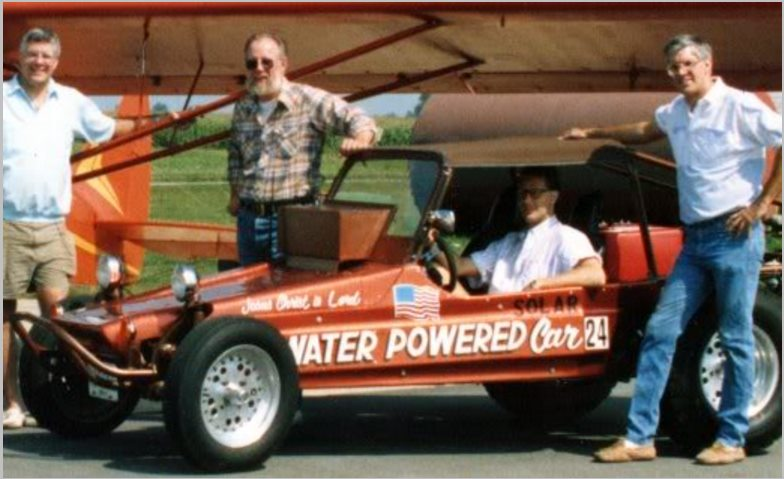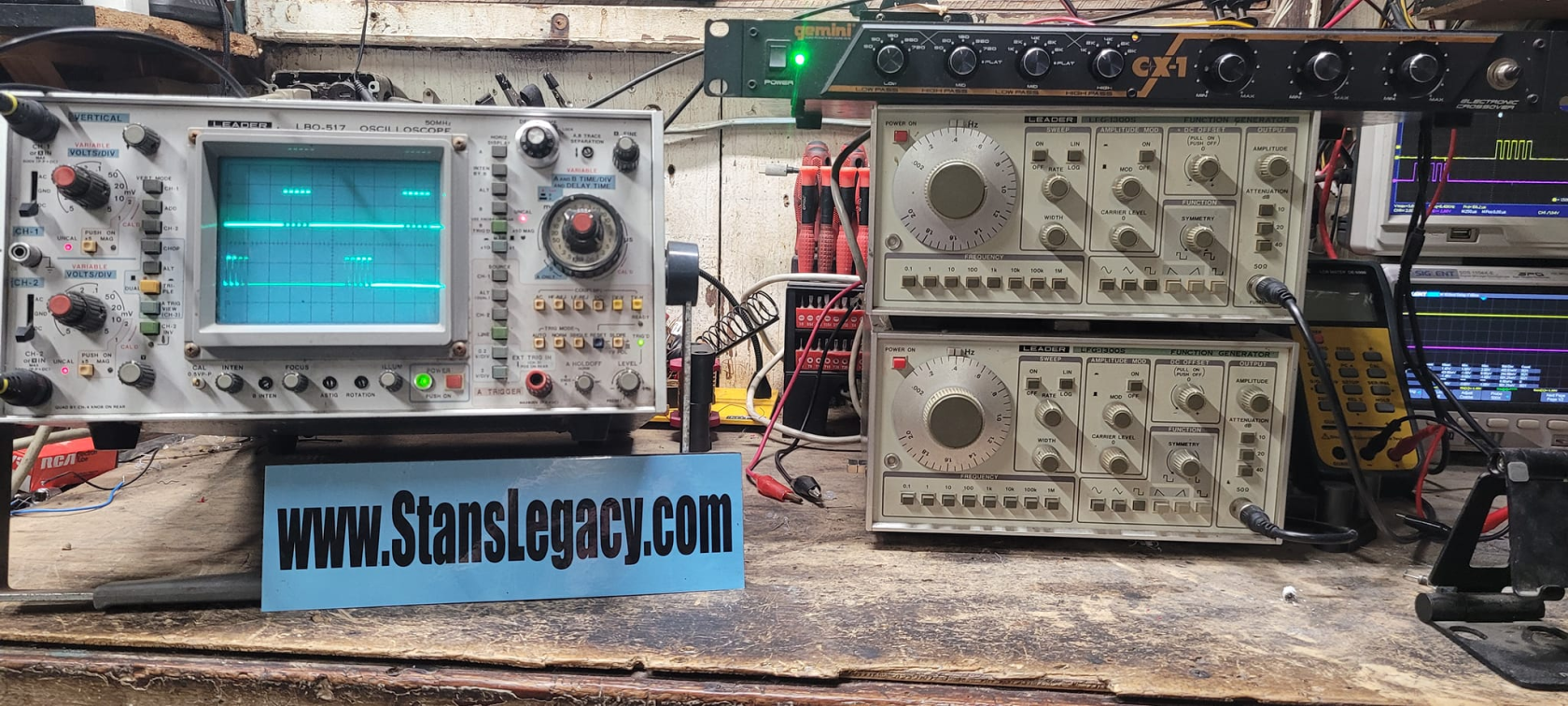The Legacy of Stanley A. Meyer
 Stanley Allen Meyer was an independent inventor from Grove City, Ohio, located near Columbus. During the 1970s, the oil embargo and its negative impact on the energy sector prompted him to develop an alternative energy source for the nation.
Stanley Allen Meyer was an independent inventor from Grove City, Ohio, located near Columbus. During the 1970s, the oil embargo and its negative impact on the energy sector prompted him to develop an alternative energy source for the nation.
Recognizing the abundance and potential of water, he set his focus on it as a key energy source. Unlike traditional electrolysis methods, Stan developed a revolutionary process that leveraged a resonance condition using high voltage and low current to efficiently split water molecules into hydrogen and oxygen gases.
This method provided an innovative approach to clean energy production. Over the years, he devised numerous other groundbreaking technologies that were aimed at transforming energy usage and independence.
Key solutions developed by Stanley Meyer included:
Electrical Particle Generator (EPG): The EPG was designed to produce electrical power with minimal or even nonexistent back electromotive force (Back EMF). This innovative approach allowed for highly efficient energy conversion, significantly reducing energy losses and making it an ideal candidate for sustainable power generation. The EPG technology has been claimed to generate electrical energy without the conventional drag effects seen in other electromagnetic systems, resulting in much greater efficiency.
Steam Resonator: The Steam Resonator allowed for the production of steam or hot water on demand, utilizing very low power. This device was particularly revolutionary because it required minimal wattage to achieve high thermal output, making it useful for both industrial and domestic heating applications. By applying resonance principles, it could produce steam almost instantaneously, offering a cost-effective and energy-efficient solution for heating needs.
Electron Extraction Circuit: This technology enabled the extraction of electrons from atoms, allowing the creation of new molecular compounds. It provided a means of breaking down chemical bonds in a controlled manner, which had potential applications in synthesizing new materials or breaking down hazardous substances into safer compounds. This ability to manipulate molecular structures was a significant leap forward, allowing for cleaner chemical processes.
Atomic Degaussing Process: The Atomic Degaussing Process was devised to neutralize nuclear radiation from spent fuel rods. This process presented a potential solution for managing hazardous nuclear waste, reducing the risks associated with storage and contamination. By neutralizing radioactive particles, this technology aimed to make nuclear waste less harmful and more manageable, addressing one of the biggest challenges in nuclear energy.
Gas Processing System: The Gas Processing System involved ionizing ambient air and combustible gas atoms to produce greater energy yields. By subjecting the gases to ionization, Stan's system enhanced the reactivity of the fuel, making combustion more efficient and resulting in higher energy output. This technology promised to improve the efficiency of internal combustion engines and other combustion-based systems, leading to reduced fuel consumption and lower emissions.
Gas Management System: The Gas Management System was a computerized approach to utilizing water-based fuels effectively. By integrating digital control and monitoring, this system ensured optimal performance of water fuel cells, adjusting parameters in real-time to maximize efficiency. It represented a step towards smarter fuel systems that could autonomously manage fuel production and utilization, ultimately making water-based fuels practical for everyday use.
Our private group is researching, reverse engineering/analyzing, Stan's technology to provide understanding and modernization. We work with an open source mindset, coupled with mindsets for avenues of decentralized manufacturing/production in the future. Please support our efforts by spreading the link of this site on social media or by word of mouth. Please visit the site regularly for continued updates.
“Have you entered the storehouses of the snow or seen the storehouses of the hail,
which I reserve for times of trouble, for days of war and battle? JOB 38 22-23
Overcoming Historical Challenges to Advance Technology
Accessibility of Stan's Patents: Previously, accessing Stan's patents was a significant challenge. They were primarily available through automated scraping of the original PDFs, which were riddled with errors, typos, and missing grammar. These issues made the patents difficult to understand and use, impeding researchers' ability to build upon Stan's work.
User-Unfriendly Patent Format: The format of Stan's patents was not conducive to easy reading. Issues included black-on-white text, poor image resolutions from 1985, lack of intuitive navigation, absence of in-document search functionality, and illustrations not being aligned with related content. These limitations created barriers for anyone trying to fully comprehend and apply the concepts presented in the patents.
Misinformation and Speculation: The field has been muddied with speculative theories and altered documents, leading to a proliferation of incorrect and modified versions of Stan's original content. This has caused significant confusion among researchers trying to understand the technology, making it difficult to discern legitimate information from misinformation.
Peer Criticism: Genuine research efforts have often been overshadowed by criticism from peers who are skeptical of the technology, hampering the progress of many promising projects. This skepticism, coupled with the spread of misinformation, has created an environment where serious researchers struggle to gain credibility.
To address these issues and foster independent research, we are excited to offer a comprehensive resource hub. This includes all of Stan's patents and publications, meticulously transcribed, spell-checked, and grammar-checked. We have ensured original PDF accuracy, incorporated keyword emphasis, and demystified terminology. Each document is now searchable, and we've introduced a feature for cross-document searches.
Moreover, our dedicated research team is ready to share the significant progress and findings we have made in this field. Join us in this journey to unravel the potential of this technology.
Stan's Legacy - Research Group - Official Discord Community - For Builders and Thinkers! Click the link to join and learn all about Stan. Engagement, Participation, Intention to learn and resources to build are required.
Note: This project is a constant work in progress, and portions of patents and publications have not yet been fully transcribed.
Stan Meyer Patents - Transcribed & Illustrated - Click Here
Stan Meyer Publications - Transcribed & Illustrated - Click Here
Stan's actual Oscilloscope. Special thanks to Max Miller - Project Icarus for it tracking down and donating it to our efforts!

